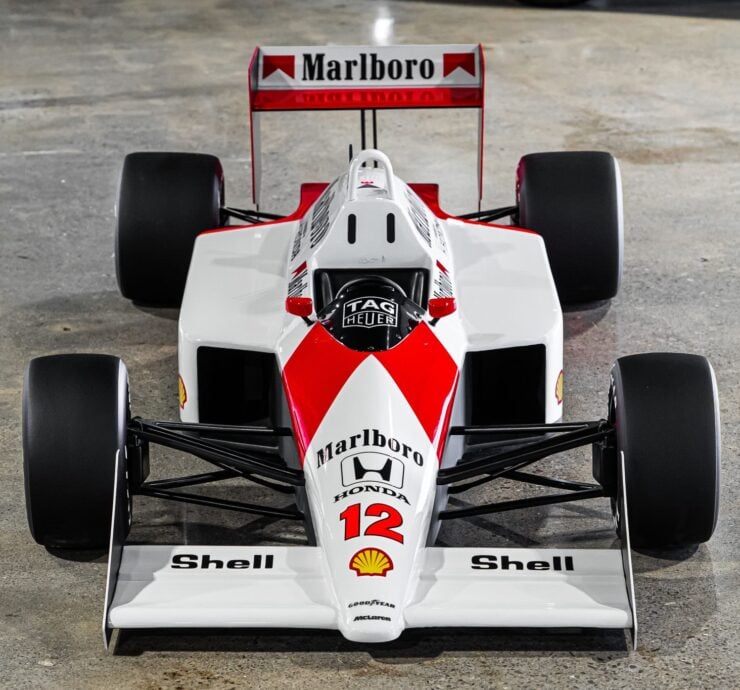The Dodge Magnum of the late 1970s would become the final car ever made on the B-body platform, a platform that had formed the... The post 1979 Dodge Magnum – The Last Of The B-Body NASCAR Aero Racers appeared...
The Dodge Magnum of the late 1970s would become the final car ever made on the B-body platform, a platform that had formed the foundation of cars from the Superbird and Daytona to the Road Runner, GTX, and Charger.
The Magnum had been developed with a single goal in mind – of homologating a new NASCAR racer that would keep Richard Petty in the Mopar family, and they almost succeeded. Petty raced Magnums in 17 races taking 7 top five finishes.
Fast Facts – The Dodge Magnum
A number of cars have been released under the Dodge Magnum name including American, Canadian, and Brazilian produced models from 1978 through to 2008. This article about the first Magnum, a car that was built to homologate a NASCAR for Richard Petty – better known to many American racing fans simply as “The King.” The Dodge Magnum was introduced in 1978 to be sold alongside the Dodge Charger. It was offered in two forms, XE and GT, initially with three engines to choose from – the 318 cubic inch (5.2 liter) V8, 360 cubic inch (5.9 liter) V8, and the 400 cubic inch (6.6 liter) V8. The Magnum was given a unique front end that was more aerodynamic than the Charger with the headlights sloped backwards under aero covers – this was a design choice made in the hopes of boosting the cars high speed performance at NASCAR super speedways like Daytona and Talladega. Richard Petty and a number of other drivers would race Dodge Magnums in 1978, with Petty scoring 7 top five finishes from 17 races. He almost won the Daytona 125, eventually coming in second, then he led over 30 laps of the 1978 Daytona 500 before a tire blowout sent him into the barriers. The car you see here is a custom 1979 Dodge Magnum that now features a slew of upgrades resulting in a car that’s both faster and better handling than the original ever was.How To Keep Richard Petty
The 1978 NASCAR season would be the first in years that the 1974 Charger wouldn’t be eligible for and it was felt that the current Charger would be ill-suited to high speed racing use due to its poor aerodynamics. This posed a major problem for Chrysler, as they didn’t want to lose their star NASCAR driver Richard Petty.
Above Video: These are the highlights of the 1978 Daytona 500, it shows Richard Petty’s tire blowout and the resulting accident that took out all three front running cars. Petty’s car is the orange and blue vehicle that was in the lead.
It was decided that more aerodynamic vehicle would be built on the Chrysler B-body platform and offered to the general public to homologate it for NASCAR use. The front end of the car was made about as aerodynamic as 1970s Malaise Era styling cues would allow, with sloped back headlights under glass covers.
Initially, the Magnum showed promise both on the track and in the showrooms. Sales for 1978, the first year, would be a respectable 47,827 units. Petty very nearly won the Daytona 125, finishing in second place, he then led the Daytona 500 for over 30 laps before a tire blowout sent him into the barriers at speed.
In total, Richard Petty would compete in the Dodge Magnum 17 times in 1978 before switching to the smaller Chevrolet Monte Carlo, saying “The Magnum is undriveable at 190 mph.” A handful of other drivers kept competing in the Magnum throughout 1978 and 1979, though none saw any significant successes.
Funnily enough that wasn’t quite the end of the Magnum’s story, Richard Petty’s son Kyle would race one of his Dad’s old Dodge Magnums in his first professional race, the 1979 Daytona ARCA 200, and he would win it outright.
The Dodge Magnum
The Dodge Magnum was released in 1978, sold until the end of 1979, it disappeared almost as fast as it had arrived, and today it remains largely forgotten.
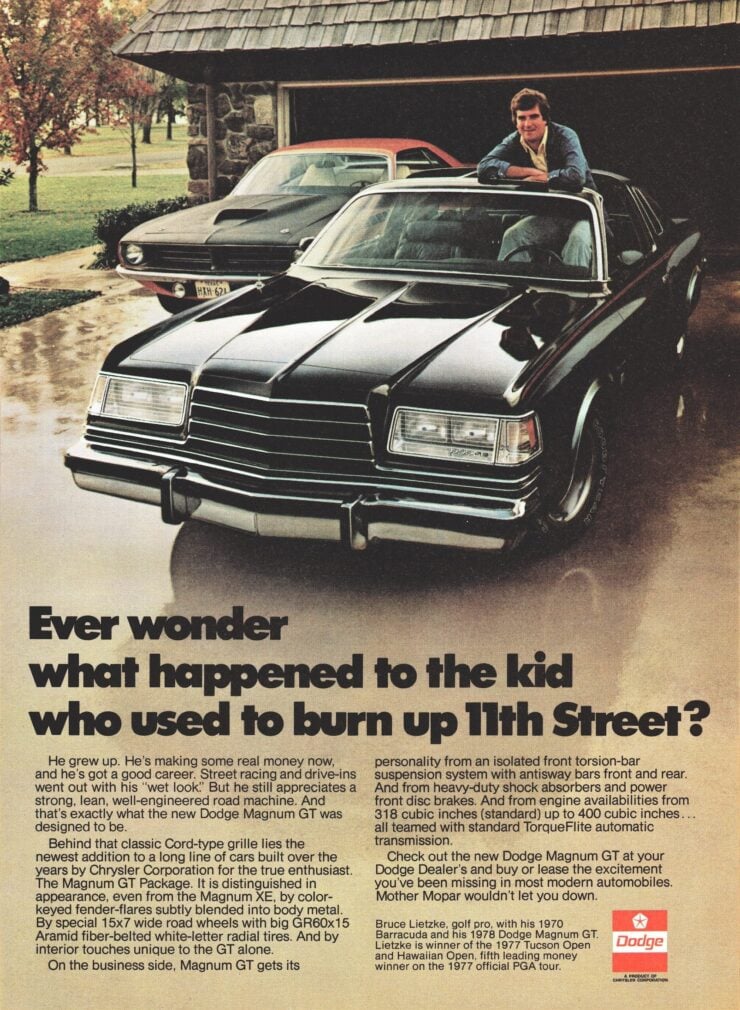
As you can see here, the Dodge Magnum was available as a T-top as well as a slick top or with a power sunroof. Image courtesy of Dodge.
The Magnum has a few claims to fame including the fact that it was the last production car to use the legendary Chrysler B-body platform and it was the last Chrysler product ever raced by Richard Petty.
Dodge had developed the car to accompany the Dodge Charger on dealership floors, it had the aforementioned aerodynamic refinements and the fact it was being raced by Richard Petty at the time of its release helped sales.
The car came with three engine choices – all V8s due to the vehicle’s weight of almost 3,900 lbs (1,800 kgs). These engines included the 318 cubic inch (5.2 liter) V8, 360 cubic inch (5.9 liter) V8, and the 400 cubic inch (6.6 liter) V8.
Only a single transmission was offered, the 3-speed A727 automatic, and buyers could choose an optional T-bar or power sunroof if when ticking boxes on the order form. The car came in GT and XE form, both with power steering, power brakes, and power seats.
After Petty switched from the Magnum to the Monte Carlo later in 1978 sales began to suffer, this wasn’t the only reason however it can’t be denied that it was a major contributing factor. By the end of 1979 sales had dropped to almost half at 25,000 units vs close to 50,000 a year earlier.

Interestingly for a two-door, the Magnum was marketed as a family car rather than solely as a personal luxury car. Image courtesy of Dodge.
The writing was on the wall, and the model would be discontinued for 1980 in favor of the smaller Dodge Miranda.
The Custom 1979 Dodge Magnum Shown Here
The car you see here is a 1979 Dodge Magnum that now benefits from a slew of upgrades over the original car. It’s a GT-trimmed XE, one of just 1,674 Magnum XEs also had the premium GT trim package in the model’s final year.
This Magnum is now fitted with an LA-series small block V8 fitted with an aluminum intake manifold, Mopar Performance valve covers, an open-element air cleaner, a performance exhaust system, and more. It now rides on period-correct American Racing wheels and modern BF Goodrich Radial T/A tires on all four corners.
Power is sent back through an automatic transmission to a Dana rear end, and the car benefits from the GT “Firm Feel” suspension which included heavy-duty torsion bars, thicker anti-sway bars front and rear, shock absorbers with special valving, and stiffer rear springs.

This vintage ad has been included due to how cheesy the storyline in the top three windows is. Image courtesy of Dodge.
The car is now finished in white with blue GT stripes, body-color-matched factory fender flares, and a rear spoiler. Inside you’ll find blue leather with front bucket seats, the Firm-Feel power steering system, cruise control, and an engine-turned-instrument Rallye dashboard.
The car is now due to roll across the auction block with Mecum in early January at their Kissimmee sale as part of the Jeff Sparks Collection. If you’d like to read more about it or register to bid you can visit the listing here.



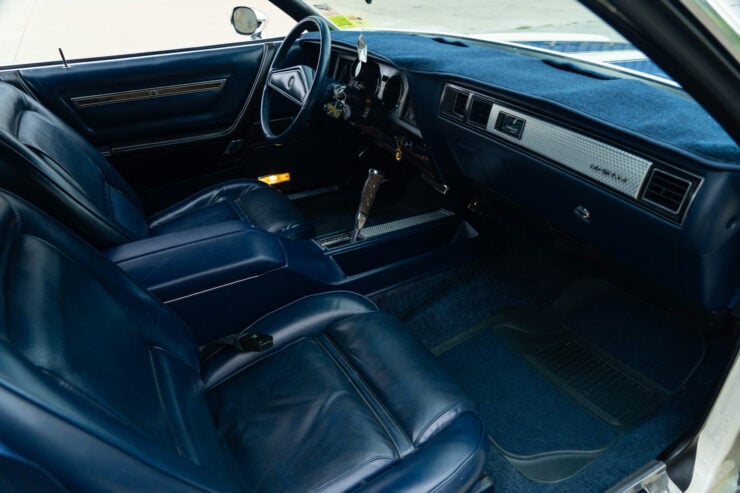
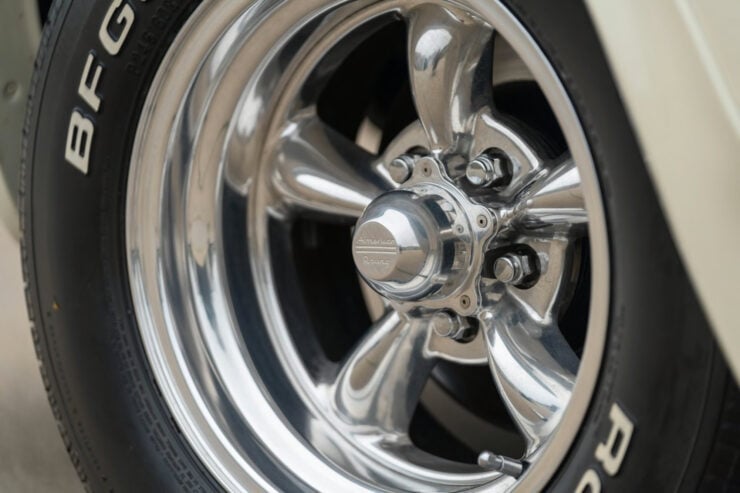
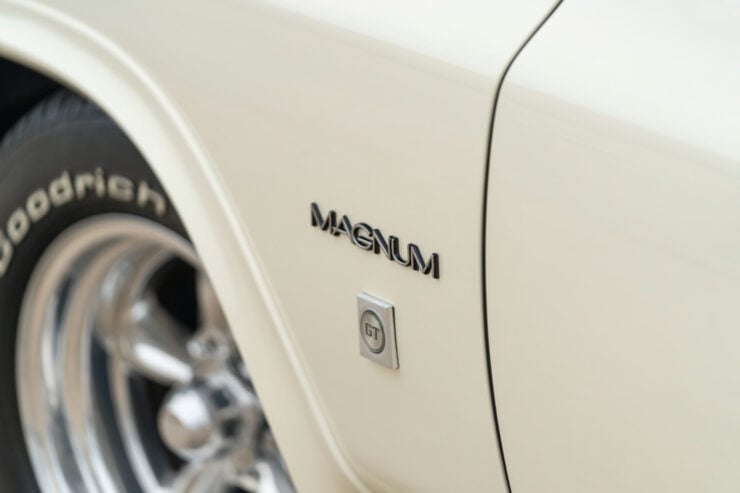


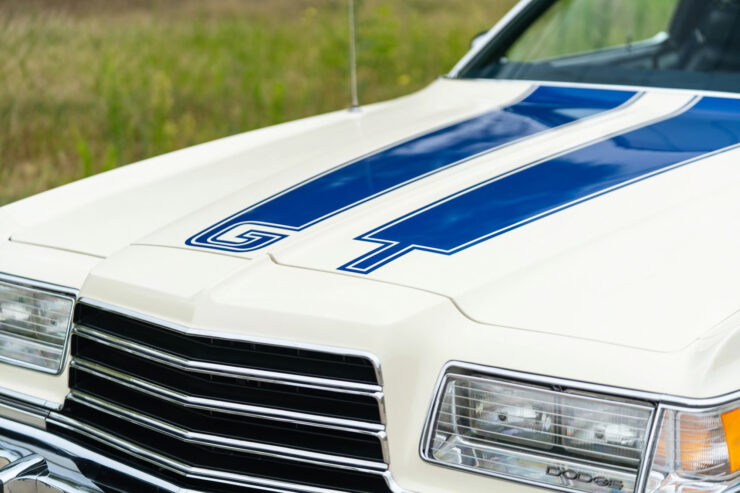
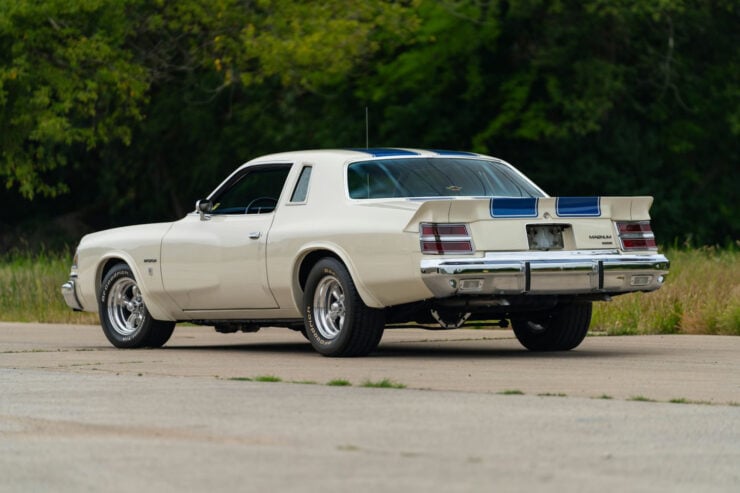





Images courtesy of Mecum
The post 1979 Dodge Magnum – The Last Of The B-Body NASCAR Aero Racers appeared first on Silodrome.



